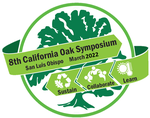#31

Habitat Associations for Amphibians and Reptiles in Undisturbed California Oak Woodland
Christopher Evelyn, University of California Santa Barbara, Earth Research Institute
William Tietje and Anne Polyakov, University of California Berkeley, Department of Environmental Science, Policy, and Management
Declining populations of many amphibian and reptile species are of increasing concern worldwide. Understanding how the distribution and abundance of these species is associated with habitat variables across multiple spatial scales can inform resource agencies and conservation organizations when setting management priorities. In 1995, we measured 23 vegetation attributes on nine 5.8-ha study plots in blue oak (Quercus douglasii)-coast live oak (Q. agrifolia) woodland located in coastal-central California. From 1995 to 2002, we conducted amphibian and reptile surveys between January and May by use of 136 plywood coverboards systematically placed within each of the nine study plots. During 9 to 14 annual visits to each plot, we recorded >8,900 observations of 11 reptile and 4 amphibian species. We combined data from our vegetation and herpetofauna surveys with GIS environmental variables and analyzed the combined dataset using multivariate techniques to determine habitat associations for slender salamander (Batrachoseps sp.), California Legless Lizard (Anniella pulchra), Western Skink (Plestiodon skiltonianus), Western Fence Lizard (Sceloporus occidentalis), Ringneck Snake (Diadophis punctatus), and night snake (Hypsiglena torquata nuchalata). Several of these species are of conservation concern in California oak woodland. Our study results will assist in a better understanding of the key oak woodland vegetation attributes necessary for the conservation of our focal species.
